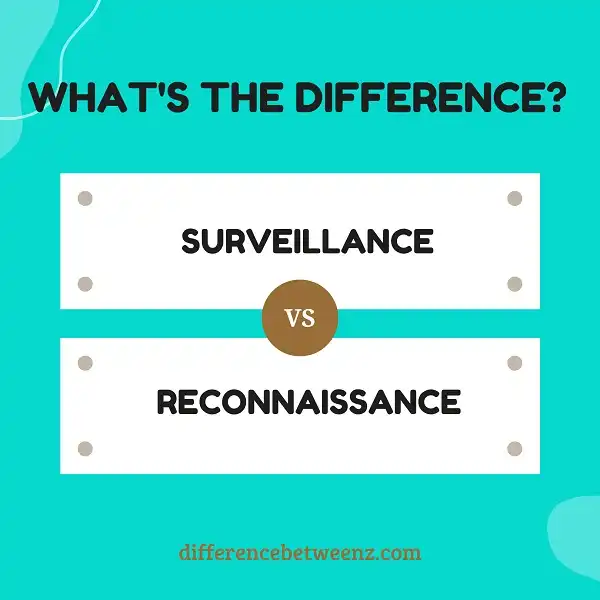The terms ‘surveillance’ and ‘reconnaissance’ are often used interchangeably, but they actually have different meanings. Surveillance is the monitoring of people or vehicles to see what they are doing, while reconnaissance is the gathering of information about a particular area or target. The main difference between the two is that surveillance is passive, while reconnaissance is active. Another key difference is that reconnaissance provides detailed information about a specific target, while surveillance gives a general overview of an area.
What is Surveillance?
Surveillance is the systematic observation of people or behavior. It can be conducted manually, through the use of cameras and other recording devices, or through the use of technology, such as satellites and listening devices. Surveillance can be used for a variety of purposes, including security and intelligence gathering, law enforcement, and safety. In many cases, Surveillance is conducted without the knowledge or consent of those being observed. This can raise ethical and legal concerns, particularly when Surveillance is used to infringe upon the privacy of individuals.
What is Reconnaissance?
Reconnaissance is the military term for the informative gathering of enemy territory or position. Reconnaissance missions are small-scale, discreet operations conducted by either special forces units or regular soldiers. The purpose of reconnaissance is to gain intelligence about the enemy without being detected. Reconnaissance troops are usually trained in stealth and wilderness survival techniques so that they can operate undetected in hostile territory. In some cases, reconnaissance troops may also engage in direct combat with the enemy in order to gather information. Reconnaissance is a vital part of military planning, and it can often mean the difference between victory and defeat.
Differences between Surveillance and Reconnaissance
The terms ‘surveillance’ and ‘reconnaissance’ are often used interchangeably, but they actually have different meanings. Surveillance is the monitoring of people or vehicles to see what they are doing, while reconnaissance is the gathering of information about a particular area or target. The main difference between the two is that surveillance is passive, while reconnaissance is active.
Another key difference is that reconnaissance provides detailed information about a specific target, while surveillance gives a general overview of an area. In military operations, surveillance is used to gather intelligence on the enemy, while reconnaissance is used to plan attacks and identify targets. Although both activities are important for national security, they serve different purposes and require different skillsets.
Conclusion
The terms “surveillance” and “reconnaissance” are often used interchangeably, but there is a clear distinction between the two. Surveillance is the passive act of observing an area or individual, while reconnaissance is the active gathering of information about an area or individual. In order to make informed decisions about how and where to conduct military operations, it is important to understand the differences between surveillance and reconnaissance.


